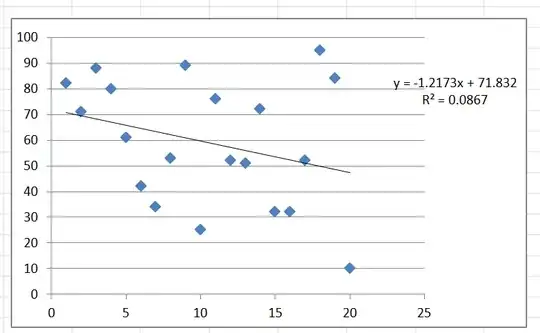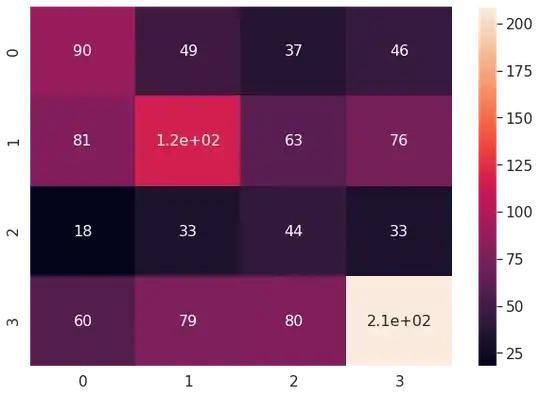This is my second data science project and i am looking for insights from people more experienced than me. I am completely self-taught and new to this and would appreciate any kind of feedback.
The first project I did was about predicting which artist had painted a painting. This new project is something different, its tabular data and the first was images.
I am trying to predict the price at fine art auctions.
I am classifying the price as unsold, below the auction house price range, in the range, or above the range.
I have scraped the data from swedish auction houses.
The data is made up of
- The price
- The title of the art work
- A description of the art work
- The name of the artist
- The auction house estimated price range
- Artist's country
- Artist's lifetime
- The Provenance (i.e. information about who as owned the painting earlier and such things)
- Exhibition information
After cleaning the data and keeping only those records where the artist.value_counts >= 15, i.e. the artist have had at least 15 items at auction, i end up with about in total 12.000 items sold.
Investigating the data, these are the features i find:
String categorical features
- artist name
- artist country
- the currency of the sold item
Integer categorical features
- exh (Exhibited or not)
- prov (Provenance or not)
- desc (Description or not)
- tit (Title or not)
- signed (Whether the painting is signed or not)
- dated (Whether the painting is dated)
- dyear (If its dated, what year)
- w_in_title (If the title contains words like summer, winter, girl or stockholm)
- medium (If its a oil painting, drawing, gouach, etching, lithograph etc)
Numerical features
- birth year
- death year
- low (The low end of the auction house estimated price)
- high (The high end of the auction house estimated price)
Correlation matrix:
Are the correlations with price too low?
Then on the numerical features I perform a power transformation to make the data more gaussian like, a quantile transformation - spreading out the most frequent values and reducing the impact of outliers and finally i remove the mean and scale it to unit variance.
Then some tensorflow preprocessing layers
from tensorflow.keras.layers.experimental.preprocessing import Normalization
from tensorflow.keras.layers.experimental.preprocessing import CategoryEncoding
from tensorflow.keras.layers.experimental.preprocessing import StringLookup
def encode_numerical_feature(feature, name, dataset):
# Create a Normalization layer for our feature
normalizer = Normalization()
# Prepare a Dataset that only yields our feature
feature_ds = dataset.map(lambda x, y: x[name])
feature_ds = feature_ds.map(lambda x: tf.expand_dims(x, -1))
# Learn the statistics of the data
normalizer.adapt(feature_ds)
# Normalize the input feature
encoded_feature = normalizer(feature)
return encoded_feature
def encode_string_categorical_feature(feature, name, dataset):
# Create a StringLookup layer which will turn strings into integer indices
index = StringLookup()
# Prepare a Dataset that only yields our feature
feature_ds = dataset.map(lambda x, y: x[name])
feature_ds = feature_ds.map(lambda x: tf.expand_dims(x, -1))
# Learn the set of possible string values and assign them a fixed integer index
index.adapt(feature_ds)
# Turn the string input into integer indices
encoded_feature = index(feature)
# Create a CategoryEncoding for our integer indices
encoder = CategoryEncoding(output_mode="binary")
# Prepare a dataset of indices
feature_ds = feature_ds.map(index)
# Learn the space of possible indices
encoder.adapt(feature_ds)
# Apply one-hot encoding to our indices
encoded_feature = encoder(encoded_feature)
return encoded_feature
def encode_integer_categorical_feature(feature, name, dataset):
# Create a CategoryEncoding for our integer indices
encoder = CategoryEncoding(output_mode="binary")
# Prepare a Dataset that only yields our feature
feature_ds = dataset.map(lambda x, y: x[name])
feature_ds = feature_ds.map(lambda x: tf.expand_dims(x, -1))
# Learn the space of possible indices
encoder.adapt(feature_ds)
# Apply one-hot encoding to our indices
encoded_feature = encoder(feature)
return encoded_feature
Then I build a keras model, after some trial and error, and run keras tuner to tune the hyperparameters.
hp = HyperParameters()
def model_builder(hp):
x = Dense(units=256, kernel_regularizer=keras.regularizers.L2(l2=0.01),
kernel_initializer=keras.initializers.HeNormal(), kernel_constraint=keras.constraints.UnitNorm(axis=0),
name = "Dense1")(all_features)
x = PReLU()(x)
x = BatchNormalization()(x)
x = Dropout(rate=hp.Float('dropout1',
min_value=0.0,
max_value=0.2,
default=0,
step=0.02))(x)
x = Dense(units=hp.Int('units2', 0, 128, step=16), kernel_regularizer=keras.regularizers.L2(l2=0.01),
kernel_initializer=keras.initializers.HeNormal(), kernel_constraint=keras.constraints.UnitNorm(axis=0),
name = "Dense2")(x)
x = PReLU()(x)
x = BatchNormalization()(x)
x = Dropout(rate=hp.Float('dropout2',
min_value=0.0,
max_value=0.2,
default=0,
step=0.02))(x)
x = Dense(units=hp.Int('units3', 0, 128, step=16), kernel_regularizer=keras.regularizers.L2(l2=0.01),
kernel_initializer=keras.initializers.HeNormal(), kernel_constraint=keras.constraints.UnitNorm(axis=0),
name = "Dense3")(x)
x = PReLU()(x)
x = BatchNormalization()(x)
x = Dropout(rate=hp.Float('dropout3',
min_value=0.0,
max_value=0.2,
default=0,
step=0.02))(x)
x = Dense(units=hp.Int('units4', 0, 64, step=8), kernel_regularizer=keras.regularizers.L2(l2=0.01),
kernel_initializer=keras.initializers.HeNormal(), kernel_constraint=keras.constraints.UnitNorm(axis=0),
name = "Dense4")(x)
x = PReLU()(x)
x = BatchNormalization()(x)
x = Dropout(rate=hp.Float('dropout4',
min_value=0.0,
max_value=0.2,
default=0,
step=0.02))(x)
x = Dense(units=hp.Int('units5', 0, 32, step=4), kernel_regularizer=keras.regularizers.L2(l2=0.01),
kernel_initializer=keras.initializers.HeNormal(), kernel_constraint=keras.constraints.UnitNorm(axis=0),
name = "Dense5")(x)
x = PReLU()(x)
x = BatchNormalization()(x)
x = Dropout(rate=hp.Float('dropout5',
min_value=0.0,
max_value=0.2,
default=0,
step=0.02))(x)
output = Dense(4, activation="softmax", name = "Outputlayer")(x)
model = keras.Model(all_inputs, output)
model.compile(optimizer=keras.optimizers.Adam(
hp.Choice('learning_rate',
values=[1e-1, 1e-2, 1e-3])),
loss=tf.keras.losses.sparse_categorical_crossentropy,
metrics=['accuracy'])
return model
A view of the model:
checkpoint = ModelCheckpoint('./checkpoints9/best_weights.tf', monitor='val_accuracy', verbose=1, save_best_only=True, mode='auto')
reduce_lr = ReduceLROnPlateau(monitor='val_loss', factor=0.5, patience=10, verbose=1, min_delta=1e-4, mode='min')
earlyStopping = EarlyStopping(monitor='val_loss', patience=30, verbose=0, mode='min')
tuner = BayesianOptimization(
model_builder,
max_trials=200,
executions_per_trial=2,
hyperparameters=hp,
tune_new_entries=True,
allow_new_entries=True,
beta = 4,
seed = 323,
directory = "/content/drive/MyDrive/output",
project_name = "Auction",
objective='val_accuracy')
tuner.search(train_ds,
validation_data=val_ds,
verbose=1,
epochs = 100,
callbacks = [checkpoint, reduce_lr, earlyStopping])
Training one of the "best" models.
Epoch 1/300
244/244 [==============================] - 7s 14ms/step -
loss: 6.3068 - accuracy: 0.3475 - val_loss: 6.1117 - val_accuracy: 0.3175
It improves slightly
Epoch 35/300
244/244 [==============================] - 3s 11ms/step -
loss: 6.0440 - accuracy: 0.4093 - val_loss: 6.0420 - val_accuracy: 0.4054
Epoch 300/300
244/244 [==============================] - 3s 11ms/step -
loss: 5.9001 - accuracy: 0.5058 - val_loss: 6.0521 - val_accuracy: 0.4117
Epoch 00300: val_accuracy did not improve from 0.42556
Confusion matrix:
So obviously it is awful.
Any ideas on what I can improve?
I am new to this so any comment, critique or suggestion you may have, however small, I am interested to hear about it.
(If you want me to add anything to the above, let me know.)


